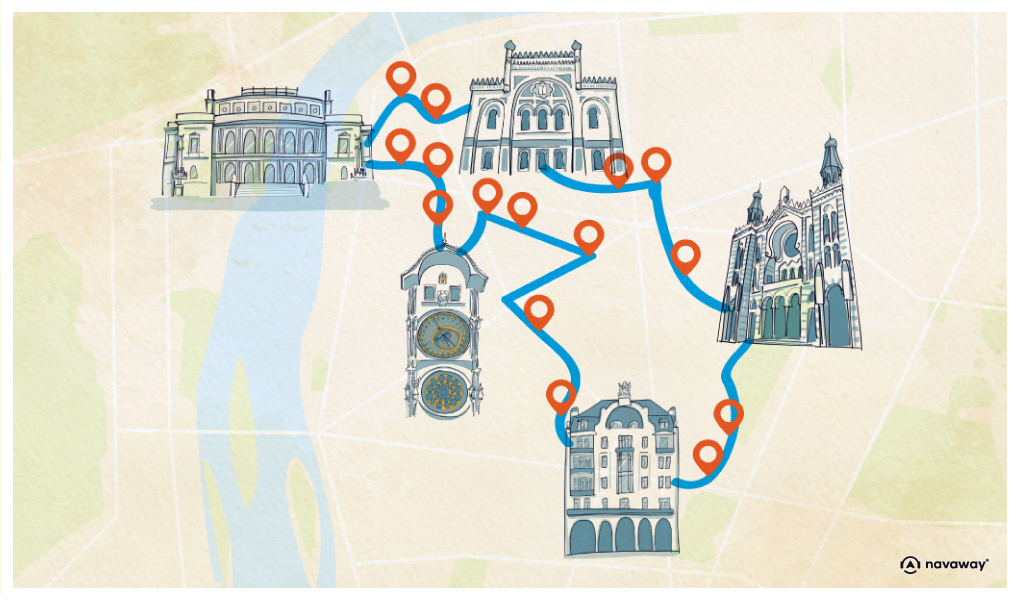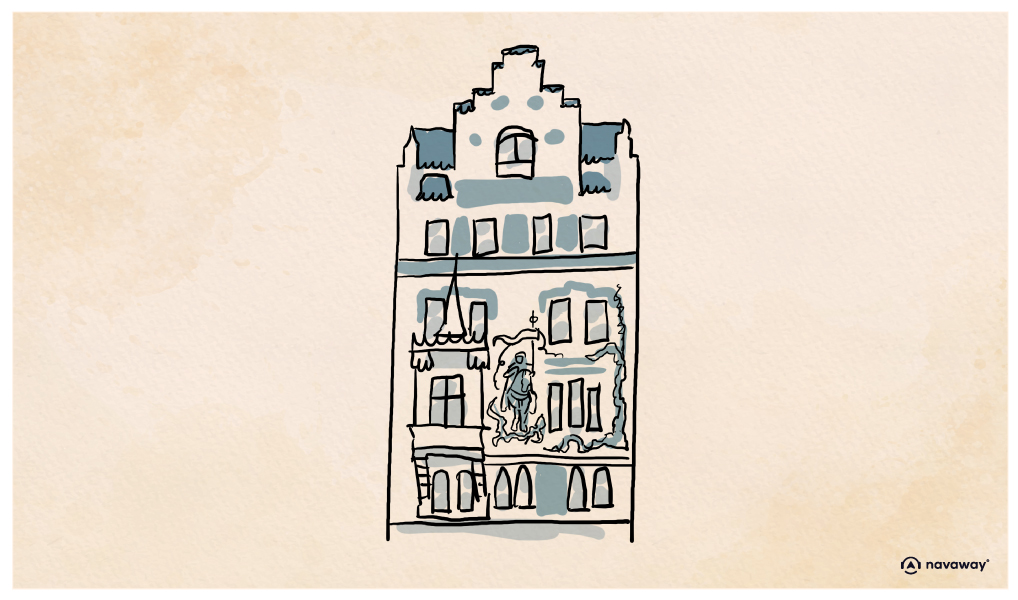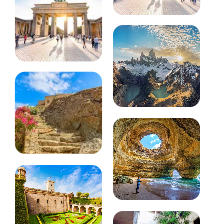
Houses and Palaces in the Square (Pt 2)

This point of interest is available as audio on the tour: Visit Prague, Back to Praguer roots
What about listening to an audio guide in Prague’s Old Town Square? Better twice than only once! First, because it’s one of the most pleasant places in the city, despite its popularity with tourists. And second, because there’s so much to see on this giant open-air stage. Turn your back to the Jan Hus Memorial, and focus instead on all these palaces and townhouses in front of you. From left to right, here are some key buildings that contribute to Prague’s beautiful scenery. Starting with the Kinský Palace, named after one of the most powerful noble families of the Austro-Hungarian Empire. It’s without a doubt one of the finest examples of late Baroque—or Rococo—architecture in Prague. Built between 1755 and 1765, it’s easily recognizable by its pink façade, decorated with stucco ornaments and statues made by Ignác František Platzer, an 18th-century German sculptor. Visually, I think that we can all agree that the building is far from deceiving! The same goes for its history. It was here, in 1843, that Bertha von Suttner was born. She is no other than the first woman to win the Nobel Peace Prize. Also, from 1893 to 1901, Franz Kafka attended the German-speaking secondary school, which was on the second floor. And his father Hermann Kafka ran a haberdashery on the ground floor, from 1912 to his passing. tgfIn February 1948, the rise of the Communist regime was declared on this very balcony. Announced by Klement Gottwald, a leading figure of Czechoslovakia’s Communist Party, the reign will last more than 40 years after this speech was proclaimed. Restored from 1995 to 2000, the building now serves as a bookstore and an annex to the National Gallery, showcasing antique and Asian art collections. Speaking of the National Gallery, we must show you another architectural gem. Look to your right, at the building near Kinský Palace. With its austere appearance, it’s quite a contrast from the Baroque buildings nearby. But don’t let that fool you. This is the Stone Bell House, and its current look was only recently uncovered. In the early 1960s, excavations revealed that beneath the building’s 19th-century Neo-Baroque façade was a stunning Gothic structure dating back from the 13th century—one of Prague’s rare and precious medieval survivors. Decorative sculptures and iconography suggest that it was maybe built to be a royal palace, possibly designed for John of Luxembourg, King of Bohemia from 1310 to 1346, and his wife Elisabeth of Bohemia, sister of King Wenceslas III, who died without an heir in 1306. A theory which cannot be proved as documents from that period are few. As for the name? Well, it’s the same story. On the right corner of the façade, you’ll see an actual stone bell. It has replaced the original, one that played a key role in 1310 when King John’s forces infiltrated the Old Town. Legend has it that Berenguer, chaplain to Queen Elisabeth, rang the bell to warn the king that he could come to the city in peace and reunite with his wife. Apparently, their son—Charles IV, the future Holy Roman Emperor—would have lived here briefly in 1333 after returning from Bohemia, while Prague Castle was under renovation. Meticulously restored from 1975 to 1987, the Stone Bell House is now used by the National Gallery to host modern and contemporary art exhibitions from Czech and international artists, as well as concerts. In the basement, a small lapidarium displays some of the building’s original architectural fragments. So, if you’re up for it, there’s an entire program waiting for you right here!

Discover other tours to visit Prague

Discover Prague with app
An interactive guide through the most beautiful streets, squares, and districts
32 fun audioguides full of historical facts, anecdotes, and legends



Comments